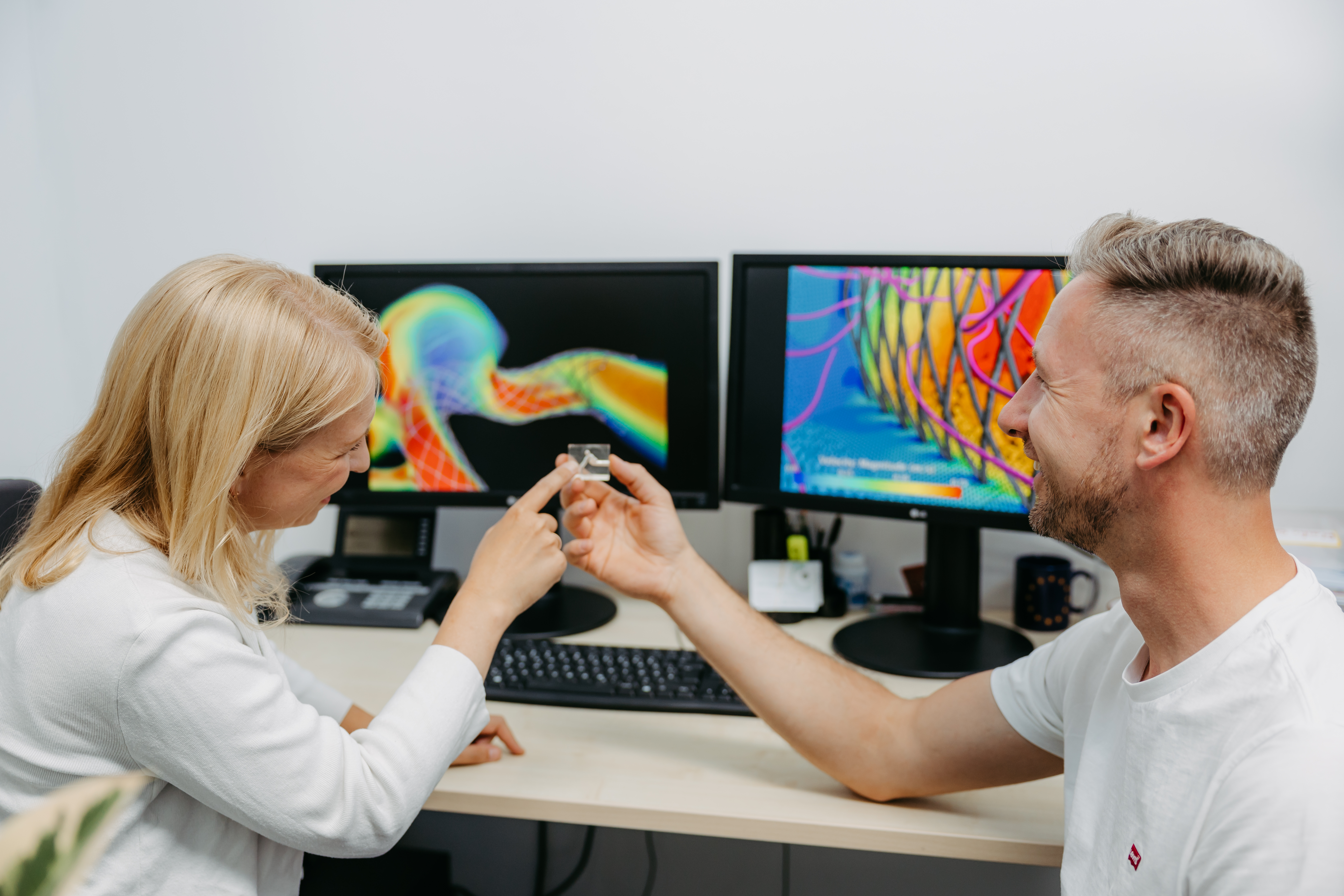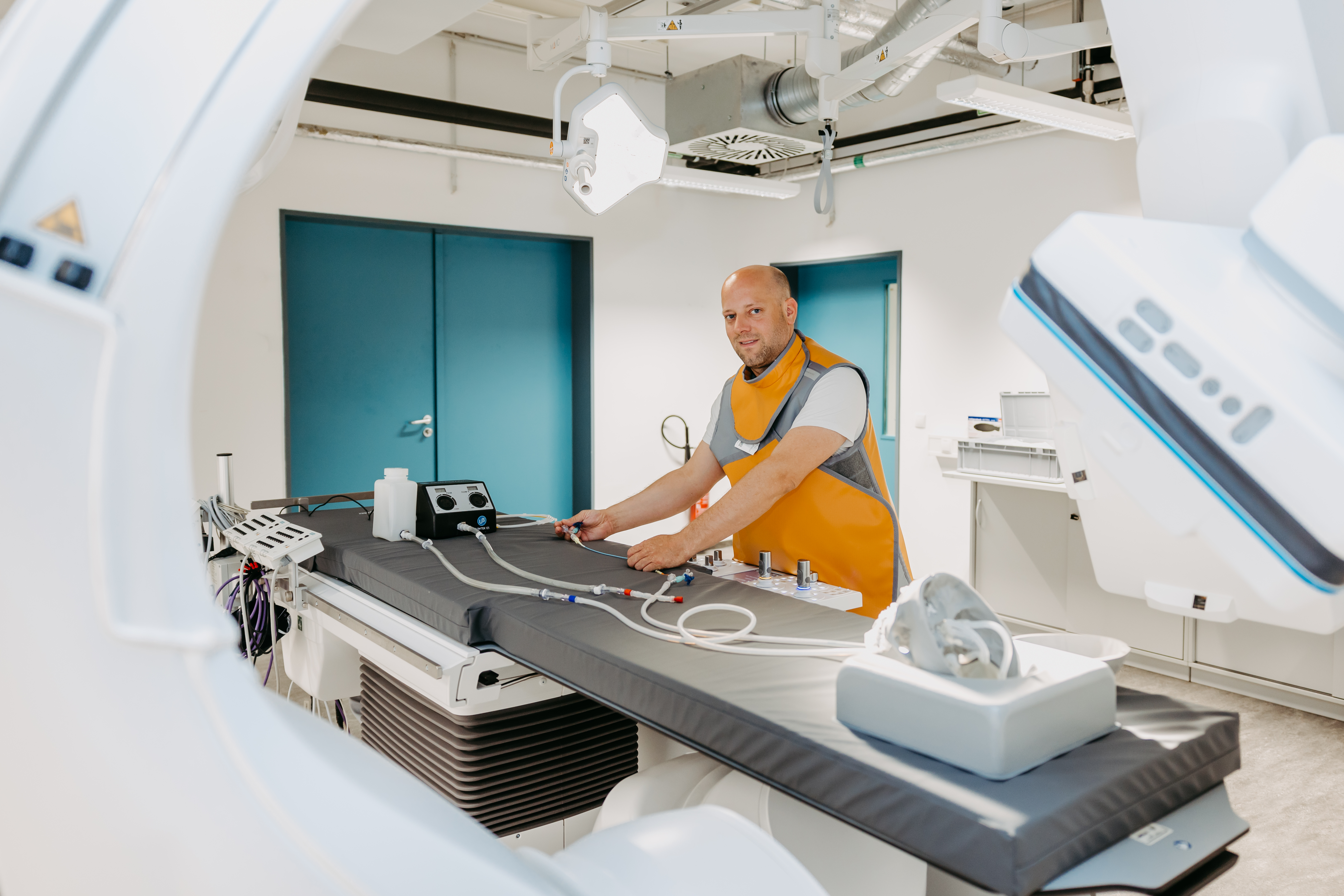NEWS
AI4IA - Neues Projekt für eine sichere Diagnose von Hirnaneurysmen
Im September 2024 startete ein interdisziplinäres Forschungsteam aus dem Forschungscampus STIMULATE zusammen mit der Otto-von-Guericke-Universität Magdeburg und der Charité Universitätsmedizin Berlin die gemeinsamen Forschungsarbeiten im AI4IA-Projekt (Automated Segmentation and DIscrimination for Intracranial Aneurysms). Das Hauptziel des AI4IA-Projekts ist es, Unsicherheitsquellen in der Bestimmung morphologischer und hämodynamischer Parameter zu identifizieren und zu reduzieren, um die Translation in die Gesundheitsversorgung zu ermöglichen.
Rupturierte Hirnaneurysmen sind die Hauptursache für Schädelblutungen, welche zu schweren Behinderungen oder zum Tode führen können. Die Versorgung von noch nicht gerissenen (unrupturierten) Aneurysmen, welche vergleichsweise häufig auftreten, stellt eine Herausforderung dar, da es zahlreiche Unsicherheiten bezüglich der individuellen Prognose, der optimalen Therapiestrategie sowie möglicher Behandlungskomplikationen gibt. Die Bestimmung der Form des Aneurysmas (Morphologie) und des Blutflusses im Aneurysma (Hämodynamik) können hier einen Beitrag zur Risikoeinschätzung leisten. Die Bestimmung dieser Parameter ist jedoch aufgrund mangelnder Robustheit bisher klinisch wenig verbreitet.
Das Projekt ist als erster Schritt zur Entwicklung robuster Rupturrisiko-Vorhersagesysteme konzipiert und auf eine Dauer von 36 Monaten im Rahmen der zweiten DFG-Schwerpunktprogrammphase (SPP2311) angelegt. Es ist als Kooperationsprojekt zwischen den auf neurovaskuläre Fragestellungen spezialisierten Forschungsgruppen in Berlin und Magdeburg geplant, wobei jede Forschungsgruppe von einem klinischen Partnerstandort unterstützt wird.
Die Forschungsgruppen haben langjährige Erfahrung in der Modellierung von Hirnaneurysmen, während die klinischen Partnerstandorte über entsprechende klinische Expertise verfügen und Geometrien realer Fälle in pseudonymisierter Form bereitstellen. In diesem Zusammenhang werden insbesondere die STIMULATE-Forschungsgruppen Medical Flows (PD Berg), Neuro Clinic (Prof. Behme) und Image Processing (Prof. Saalfeld) eng zusammenarbeiten. Das Projekt wird von der Deutschen Forschungsgemeinschaft (DFG) mit etwa 700.000 EUR unterstützt.
Mehr Informationen zum Projekt sind hier zu finden.
Bild: (links) Prof. Dr. Saalfeld und PD Dr. Berg bei der Analyse und Besprechung eines Aneurysmenmodells. (rechts) Prof. Dr. Behme am Angiographiesystem mit aufgebautem Aneurysmenexperiment. Quelle: Jana Dünnhaupt, Otto-von-Guericke-Universität Magdeburg.
Picture: (left) Prof Dr Saalfeld and PD Dr Berg analyzing and discussing an aneurysm model. (right) Prof Dr Behme at the angiography system with an aneurysm experiment set up. Source: Jana Dünnhaupt, Otto-von-Guericke-University Magdeburg.
AI4IA - New project for the reliable diagnosis of brain aneurysms
In September 2024, an interdisciplinary research team from the Research Campus STIMULATE together with Otto-von-Guericke-University Magdeburg and Charité Universitätsmedizin Berlin started joint research work in the AI4IA project (Automated Segmentation and DIscrimination for Intracranial Aneurysms). The main objective of the AI4IA project is to identify and reduce sources of uncertainty in the determination of morphological and hemodynamic parameters in order to enable translation into healthcare.
Ruptured brain aneurysms are the main cause of cranial hemorrhage, which can lead to severe disability or death. The treatment of aneurysms that have not yet ruptured, which occur comparatively frequently, presents a challenge, as there are numerous uncertainties regarding the individual prognosis, the optimal treatment strategy and possible treatment complications. Determining the shape of the aneurysm (morphology) and the blood flow in the aneurysm (hemodynamics) can contribute to risk assessment. However, the determination of these parameters has not yet been widely used clinically due to a lack of robustness.
The project is designed as a first step towards the development of robust rupture risk prediction systems and is planned to last 36 months as part of the second DFG priority program phase (SPP2311). It is planned as a cooperation project between the research groups in Berlin and Magdeburg specializing in neurovascular issues, with each research group being supported by a clinical partner site.
The research groups have many years of experience in modelling brain aneurysms, while the clinical partner sites have corresponding clinical expertise and provide geometries of real cases in pseudonymized form. In this context, the STIMULATE research groups Medical Flows (PD Berg), Neuro Clinic (Prof Behme) and Image Processing (Prof Saalfeld) will work closely together. The project is supported by the German Research Foundation (DFG) with approximately 700,000 EUR.
More information on the project can be found here.

